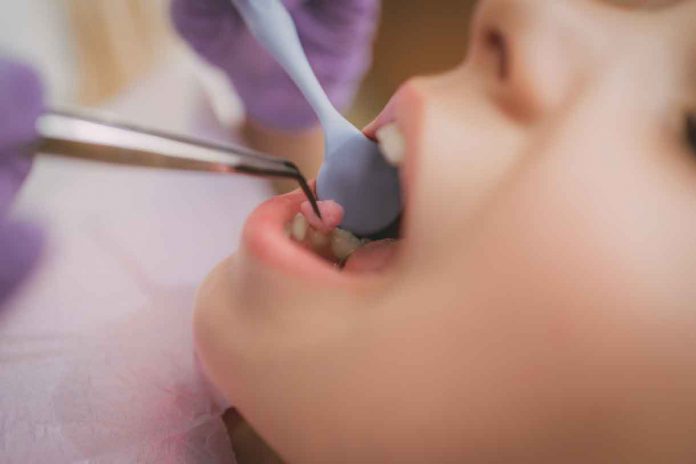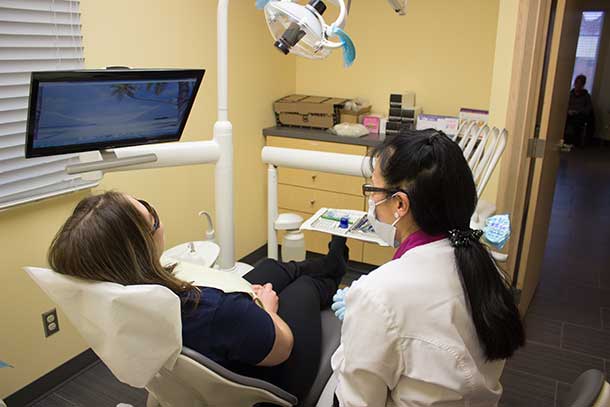The relationship between oral health and systemic diseases has been recognized in various forms throughout history, but scientific validation has only emerged in recent decades.
Ancient Observations: Early medical texts hinted at connections between oral conditions and general health. Ancient Egyptians and Greeks noted associations between dental issues and other ailments, although the mechanisms remained unclear.
19th Century: The discovery of the circulatory system laid the groundwork for understanding how oral pathogens could influence systemic health. However, concrete evidence linking oral and systemic diseases was still lacking.
Late 20th Century to Present: Advances in medical research and technology have provided robust evidence supporting the oral-systemic health connection. Studies have increasingly demonstrated how oral health impacts conditions like heart disease, diabetes, and respiratory infections.
Why It Matters: A historical lens underscores the gradual yet profound recognition of oral health’s role in overall health, highlighting the importance of integrated healthcare approaches today.
🔍 Case Study: In the early 2000s, a groundbreaking study published in the Journal of Periodontology found a significant association between periodontal disease and an increased risk of heart attacks. This study paved the way for more comprehensive research into how oral inflammation can contribute to cardiovascular issues.
The Interconnectedness of Oral and Systemic Health
Understanding the bidirectional relationship between oral health and systemic conditions is essential for comprehensive healthcare.
1. Cardiovascular Disease
The Link: Chronic inflammation and infections in the mouth, such as periodontal disease, have been associated with an increased risk of heart disease, stroke, and atherosclerosis.
Mechanism: Oral bacteria can enter the bloodstream, contributing to the formation of arterial plaques and promoting inflammation throughout the body.
Takeaway: Maintaining healthy gums and teeth can be a proactive measure in reducing the risk of cardiovascular complications.
2. Diabetes
The Link: There is a well-established bidirectional relationship between diabetes and periodontal disease. Poor glycemic control can exacerbate oral infections, while severe periodontal disease can impair blood glucose regulation.
Mechanism: Inflammation from gum disease can affect insulin sensitivity, making diabetes management more challenging.
Takeaway: Effective management of oral health is crucial for individuals with diabetes to help control blood sugar levels and prevent complications.
🩺 Real-Life Example: Sarah, a 45-year-old with Type 2 diabetes, noticed her blood sugar levels were difficult to control. After addressing her severe gum disease with her local Nepean dentist and periodontist, her blood glucose levels stabilized significantly.
3. Respiratory Infections
The Link: Oral pathogens can be aspirated into the lungs, leading to respiratory infections such as pneumonia, especially in vulnerable populations like the elderly or those with compromised immune systems.
Mechanism: Bacteria from the mouth can travel to the respiratory tract, causing infections and exacerbating existing respiratory conditions.
Takeaway: Good oral hygiene is vital in preventing respiratory infections, particularly in healthcare settings and among high-risk groups.
🏥 Patient Testimonial: “After implementing a rigorous oral hygiene routine, my elderly mother experienced fewer respiratory infections, improving her overall quality of life,” shares John, a caregiver.
4. Pregnancy Complications
The Link: Periodontal disease has been linked to adverse pregnancy outcomes, including preterm birth and low birth weight.
Mechanism: Inflammatory mediators from gum infections can affect the placental environment, influencing fetal development.
Takeaway: Pregnant individuals should prioritize oral health as part of prenatal care to support healthy pregnancy outcomes.
👶 Study Highlight: A 2016 study in Journal of the Canadian Dental Association (JCDA) found that treating periodontal disease in pregnant women reduced the incidence of preterm births by 50%.
Mechanisms Bridging Oral and Systemic Health
Several biological mechanisms explain how oral health impacts systemic conditions:
Inflammation: Chronic oral infections lead to systemic inflammation, a common pathway in many chronic diseases such as heart disease and diabetes.
Bacterial Translocation: Oral bacteria can enter the bloodstream through inflamed gums, directly affecting other organs and contributing to disease processes.
Immune Response: The body’s immune response to oral pathogens can influence systemic immune function, potentially exacerbating or mitigating other health conditions.
Genetic Factors: Genetic predispositions can affect both oral and systemic health, indicating a complex interplay between genes and environmental factors.
Ottawa dentist offices are well-versed in these mechanisms and utilize this knowledge to deliver integrated care that promotes both oral and overall health.
🔬 Interactive Element Suggestion: A clickable diagram illustrating each mechanism and how it connects oral health to systemic conditions.
Advances in Research and Integrated Healthcare
The growing evidence linking oral and systemic health has spurred advancements in research and healthcare practices.
1. Interdisciplinary Collaboration
Innovation: Healthcare providers are increasingly adopting an interdisciplinary approach, integrating dental care with primary healthcare services.
Benefits:
- Comprehensive patient assessments.
- Early detection of systemic conditions through oral examinations.
- Coordinated treatment plans enhancing overall health outcomes.
Takeaway: Collaborative healthcare models ensure that oral health is considered a fundamental component of overall well-being.
🤝 Success Story: The integration of dental screenings in primary care clinics led to early detection of diabetes in several patients, allowing for timely intervention and management.
2. Enhanced Diagnostic Tools
Innovation: Advanced diagnostic tools, such as biomarkers and imaging technologies, are being developed to detect early signs of systemic diseases through oral health indicators.
Benefits:
- Early intervention and prevention strategies.
- Improved accuracy in diagnosing systemic conditions.
- Personalized treatment plans based on comprehensive health profiles.
Takeaway: Cutting-edge diagnostics facilitate the integration of oral and systemic health assessments, promoting proactive healthcare.
🖥️ Technology Highlight: Saliva-based tests are emerging as non-invasive methods to detect biomarkers associated with systemic diseases like cancer and diabetes.
3. Public Health Initiatives
Innovation: Public health campaigns are increasingly emphasizing the importance of oral health in preventing systemic diseases.
Benefits:
- Increased public awareness and education.
- Enhanced access to dental care services.
- Promotion of preventive measures across communities.
Takeaway: Public health strategies that incorporate oral health education contribute to broader health improvements and disease prevention.
Enhancing Patient Experience through Integrated Care
Integrating oral and systemic health care not only improves health outcomes but also enhances the patient experience.
Holistic Approach: Treating patients holistically ensures that all aspects of health are addressed, leading to more effective and sustainable health outcomes.
Patient Education: Educating patients about the oral-systemic connection empowers them to take proactive steps in managing their health.
Coordinated Care: Seamless communication between dental and medical professionals ensures that patients receive comprehensive and coordinated care, reducing the risk of fragmented treatments.
Takeaway: Integrated care models foster a more patient-centered approach, enhancing satisfaction and health outcomes.
Future Directions: Bridging Oral and Systemic Health
The future of healthcare lies in the seamless integration of oral and systemic health practices.
1. Personalized Medicine
Innovation: Utilizing genetic and biomarker information to tailor oral and systemic health interventions to individual patient profiles.
Benefits:
- More effective prevention and treatment strategies.
- Enhanced patient engagement and adherence to care plans.
- Reduction in the prevalence of chronic diseases through personalized interventions.
Takeaway: Personalized medicine promises to revolutionize how we approach the interconnectedness of oral and systemic health.
🧬 Future Outlook: Genetic testing could identify individuals at higher risk for both oral and systemic diseases, allowing for targeted preventive measures.
2. Technological Integration
Innovation: Leveraging digital health technologies, such as electronic health records (EHRs) and telehealth, to integrate oral and systemic health data.
Benefits:
- Improved data sharing and communication among healthcare providers.
- Enhanced monitoring and management of patient health.
- Greater accessibility to comprehensive healthcare services.
Takeaway: Technology serves as a bridge, facilitating the integration of oral and systemic health care and improving overall patient management.
3. Research and Innovation
Innovation: Ongoing research into the mechanisms linking oral and systemic health continues to uncover new insights and potential treatment avenues.
Benefits:
- Development of novel therapies targeting both oral and systemic conditions.
- Enhanced understanding of disease pathways and prevention strategies.
- Expansion of interdisciplinary knowledge and practices.
Takeaway: Continued research is essential in deepening our understanding and improving the integration of oral and systemic health care.
🔬 Research Frontier: Exploring the role of the oral microbiome in systemic diseases to develop probiotic treatments that could benefit both oral and overall health.
Conclusion
The intricate connection between oral health and systemic well-being underscores the importance of a holistic approach to healthcare. From preventing chronic diseases to enhancing quality of life, maintaining optimal oral hygiene is a cornerstone of overall health. As research continues to unveil the profound interdependencies between the mouth and the body, integrated healthcare practices are becoming increasingly vital.
Looking Ahead: The future holds promising advancements in personalized medicine, technological integration, and interdisciplinary collaboration, all aimed at bridging the gap between oral and systemic health. Embracing these developments will lead to more effective prevention, diagnosis, and treatment strategies, ultimately fostering healthier communities.
🌟 Vision for the Future: Imagine a healthcare system where your dentist and physician work hand-in-hand, using integrated data and personalized strategies to ensure your oral and systemic health are maintained in harmony.
Take the Next Step
Stay Informed: Keep abreast of the latest research linking oral and systemic health by following reputable sources such as the Canadian Dental Association (ADA).
Collaborate with Healthcare Providers: Ensure that your dental care is coordinated with your primary healthcare provider. Share your complete health history and discuss how maintaining oral health can benefit your overall well-being.
Prioritize Preventive Care: Regular dental check-ups, proper oral hygiene practices, and a healthy lifestyle are essential in safeguarding both your oral and systemic health.
Interactive Prompt: Reflect on your current healthcare routine. Are your dental and medical appointments coordinated? Consider scheduling a consultation with both your dentist and physician to discuss your overall health strategy.
Remember: Your oral health is a vital component of your overall health. By understanding and nurturing this connection, you take a significant step toward a healthier, more vibrant life.
💡 Pro Tip: Incorporate a daily oral hygiene routine that includes brushing, flossing, and using an antimicrobial mouthwash to maintain both oral and systemic health.






